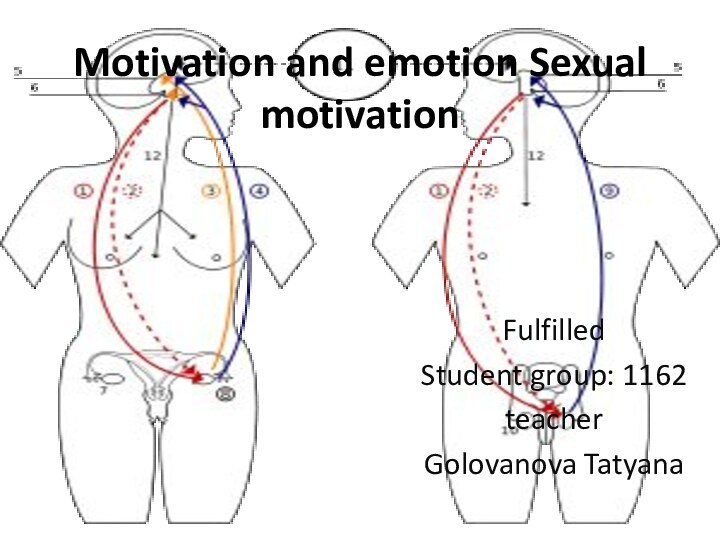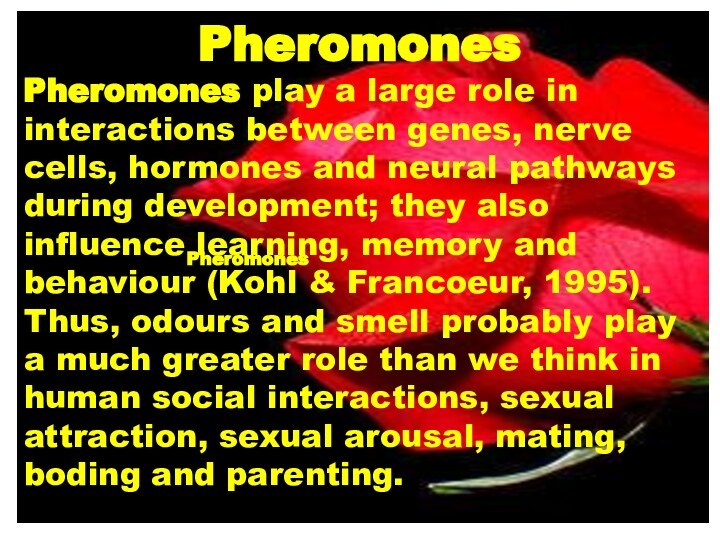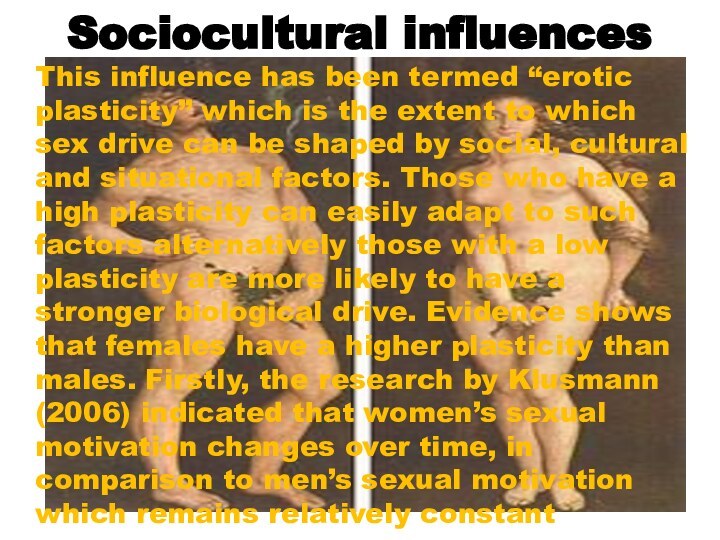- Главная
- Разное
- Бизнес и предпринимательство
- Образование
- Развлечения
- Государство
- Спорт
- Графика
- Культурология
- Еда и кулинария
- Лингвистика
- Религиоведение
- Черчение
- Физкультура
- ИЗО
- Психология
- Социология
- Английский язык
- Астрономия
- Алгебра
- Биология
- География
- Геометрия
- Детские презентации
- Информатика
- История
- Литература
- Маркетинг
- Математика
- Медицина
- Менеджмент
- Музыка
- МХК
- Немецкий язык
- ОБЖ
- Обществознание
- Окружающий мир
- Педагогика
- Русский язык
- Технология
- Физика
- Философия
- Химия
- Шаблоны, картинки для презентаций
- Экология
- Экономика
- Юриспруденция
Что такое findslide.org?
FindSlide.org - это сайт презентаций, докладов, шаблонов в формате PowerPoint.
Обратная связь
Email: Нажмите что бы посмотреть
Презентация на тему Motivation and emotionsexual motivation
Содержание
- 2. Introduction This chapter introduces psychological understandings of
- 3. Kinsey's Landmark Study of Human Sexual
- 4. MasturbationMasturbation can be defined as self gratification
- 5. Pheromones Pheromones play a large role
- 6. Sexual Motivation and Pheromones There has been
- 7. Summary Sex is a part of our
- 8. Sociocultural influences This influence has been termed
- 9. Research Issues Due to sex being mostly
- 10. Relationships Does sexual motivation change in relationships?
- 11. Psychology of Sexual Motivation There is great
- 12. Скачать презентацию
- 13. Похожие презентации
Introduction This chapter introduces psychological understandings of sexual motivation. After reading this chapter you will have an understanding of some of the most influential studies in human sexual behavior, the evolution of human sexual behavior, the












Слайд 3
Kinsey's Landmark Study of Human Sexual Behavior
Alfred Kinsey
and colleagues (1953) conducted the most influential study of
human sexual behaviour in the 1940’s and 1950’s. Kinsey, azoologist, wanted to create a taxobomyof sexual behavior, usually constructed in biology. Over a period of nine years Kinsey and colleagues interviewed roughly 12,000 American males and females, to determine sexual fact, void of social or moral interpretations.
Слайд 4
Masturbation
Masturbation can be defined as self gratification of
sexual desire. Masturbation has been identified as good indicator
of sexual motivation or drive. Studies report that males masturbate far more often than females. Women are more likely than men to report never masturbating at all and those who do masturbate do it much less frequently.
Слайд 5
Pheromones
Pheromones play a large role in interactions between
genes, nerve cells, hormones and neural pathways during development;
they also influence learning, memory and behaviour (Kohl & Francoeur, 1995). Thus, odours and smell probably play a much greater role than we think in human social interactions, sexual attraction, sexual arousal, mating, boding and parenting.Pheromones






















![Тартык [ң] авазы һәм ң хәрефе. презентация к уроку (1 класс) по теме](/img/tmb/9/823966/928a7b6461a2dbae3c8fdb0bcff1c554-210x.jpg)






